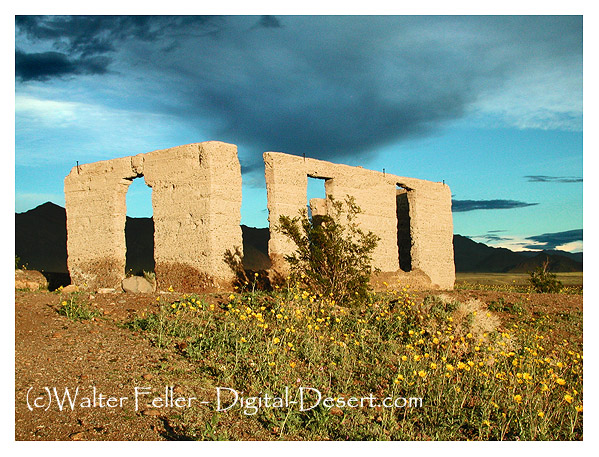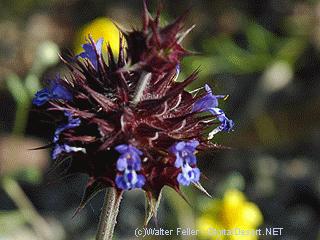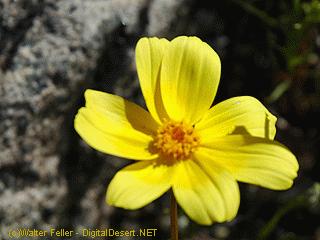--
Death Valley Wildflower Photo Galleries: 1 - 2
Death Valley Wildflowers

Ashford Mill
Death Valley is famous for its spectacular, spring wildflower displays, but those are the exception, not the rule. Only under perfect conditions does the desert fill with a sea of gold, purple, pink or white flowers. Although there are years where blossoms are few, they are never totally absent.
Fleeting Beauty
Most of the showy desert wildflowers are annuals, also referred to as ephemerals because they are short-lived. Oddly enough, this limited lifespan ensures survival here. Rather than struggle to stay alive during the desert's most extreme conditions, annual wildflowers lie dormant as seeds. When enough rain finally does fall, the seeds quickly sprout, grow, bloom and go back to seed again before the dryness and heat returns. By blooming enmasse during good years, wildflowers can attract large numbers of pollinators such as butterflies, moths, bees and hummingbirds that might not otherwise visit Death Valley.
A good wildflower year depends on at least three things:
Well-spaced rainfall throughout the winter and spring
Sufficient warmth from the sun
Lack of drying winds
Rain is Key
Deep soaking, gentle rain is essential for a desert floral display. To begin, a rainstorm of a half inch or more is needed to wash the protective coating off wildflower seeds and allow them to sprout. For plants to continue growing, rainstorms must come at evenly-spaced intervals throughout the winter and spring. The best blooms are triggered by an early, winter-type rainstorm in September or October, followed by an El Nino weather pattern that brings above average rainfall to the Desert Southwest.
Warming Things Up
Wildflower seeds that sprout with cool winter storms often remain small and low to the ground until the springtime sun starts to warm the soil. They may not look like they are growing, but below the surface a strong root system is being built. As the temperatures get warmer the well established plants then put on a growth spurt and start to bloom.
Harsh Desert Wind
Frequent springtime windstorms without additional rain can bring about a quick end to the spring bloom or even prevent it from happening by killing off delicate sprouts. Dry, moving air dehydrates exposed surfaces of all living things, including human beings. Desert plants often have waxy, hairy or spiny leaves to baffle the wind and retain precious moisture. Humans carry and drink water as needed, but the wildflowers grow and bloom only until they dry out (or late-spring heat arrives,) leaving seeds scattered on the desert floor to produce the next generation.
Death Valley Wildflower Photo Galleries: 1 - 2
source - NPS




